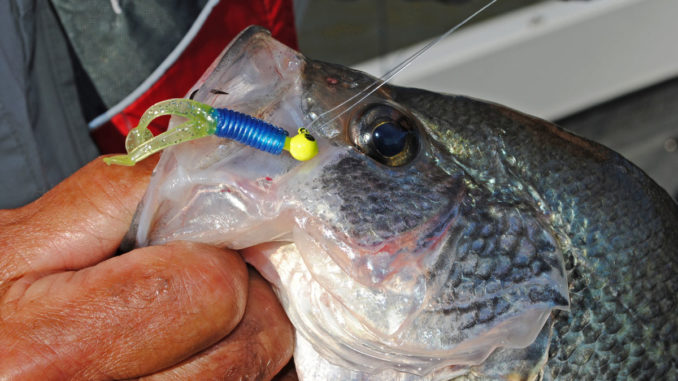
New regulations will take effect in July if signed by Gov. Nikki Haley.
As expected, a major rewrite of South Carolina’s freshwater fishery laws sailed through the legislature in the opening weeks of the 2012 session and was sent to Gov. Nikki Haley for her signature. The new regulations will take effect in July if approved by Haley.
The two bills, introduced in the House last April by a multitude of representatives, had worked their way through the legislative process all the way to second reading in the Senate during the final week of the regular session in 2011. The bills received third reading in the Senate, the House concurred and they were ratified Jan. 26.Ross Self, chief of Freshwater Fisheries for the South Carolina Department of Natural Resources, called the rewrite a “monumental effort.”
“This was the first major overhaul of our freshwater fishery laws in at least 40 years,” Self said.
The rewrite was undertaken to modernize and bring the state’s laws regulating freshwater fishing up to date, and to reorganize and clean up statutes that had been patched and amended numerous times over the years, Self said.
“The chapter that deals with this had stuff packed in and added on, and it was sort of a confused mass of legislation. Probably 50 percent of what was done was essentially cleaning up the law,” he said.
Self said an effort was made to reorganize laws so they were grouped together instead of being scattered throughout.
“The biggest part of the changes the public will probably not notice, but they will help law enforcement and the judiciary and make it easier to find things in the code,” he said. “The re-definitions of water bodies will be beneficial to everybody. When you say Lake Murray, for instance, there is now a definition in the law of Lake Murray so you will know just how far upriver the definition applies. Right now, it is kind of vague and hard to pinpoint — where rivers and reservoirs come together.”
The bills were proposed by a task force representing all segments of the recreational fishing public, plus professional guides and commercial anglers and representatives from most major fishing clubs. One bill (HB 3864) dealt strictly with gamefish, the other (HB 3865) with non-game fish, and they cover species from black bass and crappie to striped bass and bream to catfish and trout.
The bills were comprehensive in cleaning up the language in existing fishery laws, renaming bodies of water to concur throughout the state, addressed length minimums, baitfish and even established a trophy striped bass fishery on Lake Russell.
Among specifics addressed in last-minute amendments are: no non-game gear allowed in Lake Monticello and setting new limits for striped bass on Lake Murray. The new Lake Murray limits are five fish with a minimum of 21 inches from October through May and no length limit from June through September.
“We originally proposed to allow trotlines in Lake Monticello, but there was some concern from fishermen on that lake, so that was taken out by the Senate,” Self said. “We were going to suspend the striper size limit on Lake Murray for July, August and September, but the Senate added another month, so fishermen can now keep the first five stripers they catch June through September, no matter what size they are.”
Self said the suspension on the size limit during the summer should relieve some of the hooking mortality on striped bass when the fish are most stressed.
Among other major changes to the fisheries laws:
• Sets a bass creel limit of 10 and a 14-inch minimum size for black bass in all but the Savannah River waters, where it will remain at 12 inches to comply with South Carolina’s reciprocal fishing agreement with Georgia.
• Establishes a statewide limit of five trout per day, except in Lake Jocassee, where the limit is three.
• Sets a minimum size limit of 8 inches for crappie and a reduction in the daily limit from 30 to 20 to allow more of the species to reach reproductive size and stabilize populations.
• Reduces the creel limit on redbreast from 20 to 15 to try to slow the adverse impact of flathead catfish on those sunfish in coastal rivers.
• Bans transporting fish from one body of water to another to try to slow the spread of invasive fish species and help control disease agents.
• Establishes protection for the nearly 30 species of freshwater mussels native to South Carolina, making it illegal to take mussels without a permit.
The ban on transporting fish from one body of water to another goes beyond keeping a few bass alive in the live well and them releasing them upriver, Self said.
“It is now unlawful to release fish except back in the water where they were caught,” he said. “That means if you have half a dozen baitfish you bought at a bait shop you can’t just dump them in the lake at the end of the day. We did this to try to control the expansion of non-native fish in the state and also because of our increasing concern with spreading disease vectors in fish.”
Self said the protection for native freshwater mussels was necessary; most of them are not doing very well in South Carolina because they are sensitive to environmental changes and are critical to water quality. The law now allows mussels to be harvested only with a permit.
“When I came to South Carolina 27 years ago I never thought the Freshwater Fisheries Section would propose legislation to protect mussels, but that shows how the environment has changed and how our mission has changed,” Self said. “The law is not extended, however, to non-native Asian clams which are nearly everywhere in the state.”



Be the first to comment